

Home » How to organise a corporate cycling challenge
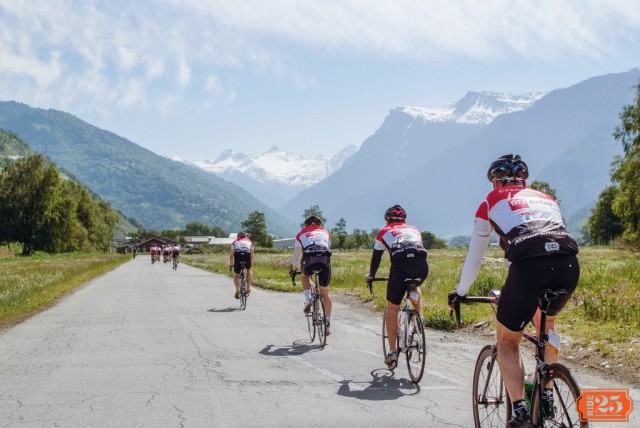
At Ride25 we’re proud to organise bespoke cycling holidays and challenges for the employees and clients of some fantastic companies. Google, Facebook, SkyBet, Crowdcube and Mace are just some of the names we’ve worked with in the past year, with rides ranging from 1 day rides in the UK to a week-long jaunt from Innsbruck to Monaco.
I asked Rob Hamilton, Founder and Chairman of Ride25, to briefly summarise the appeal of a corporate bike ride:
It’s a great way to bring people together and working to a common goal outside of business.
It’s so much better than a game of golf: instead of being stuck with 3 other people for the day, you’re able to move between groups and chat to everyone. Regardless of your level within the business, you’re all the same on a bike
And you get a lot of fresh air.
On our journey we’ve figured out some great tips to help with organising a cycling holiday which we thought we’d share. Of course if the idea of organising one yourself is too daunting you can always drop us a line and we’ll help you arrange the perfect cycling holiday adventure!
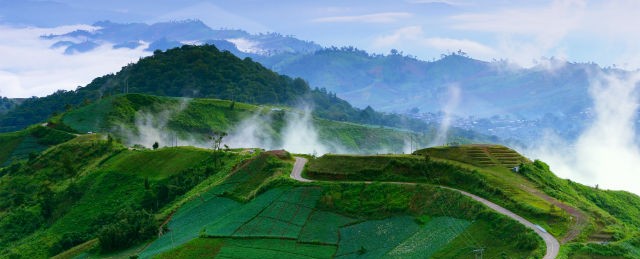
Before figuring out how to get your cyclists from A to B, you must first decide where A and B are.
Will you start at home, your company’s office, or at a photogenic landmark nearby? Each has its benefits: a send-off photo outside your office is great promotional material for your business, but one with a famous landmark in the background is much better for showing off to friends and relatives after the ride.
A similar consideration needs to be made when finishing – will you finish in a big city square or by arriving at a specially arranged welcome event? The latter is more impressive, but entails a whole extra event to plan (more on this later).
Punctuating your route with rest-stops is vital too, whether they be morning espresso breaks or overnight hotel stops. Make sure each stop isn’t too far from the route, that it has a toilet, and ideally that the owners are prepared to receive a large group of cyclists!
Deciding how to get your group from A to B is perhaps the hardest part of the ride; using Google Maps’ directions tool just doesn’t cut it. You need to research which routes are best for cyclists, taking into account amount of traffic, road surfaces, proximity to cafés and bike shops, as well as deciding where to stay at the end of each day and figuring out the route that takes all of this into account.
Strava is our preferred mapping software as it offers intuitive route creation, accurate elevation figures and graphs, and a bunch of other features (see our posts on Stravistix and Strava Labs for more help). MapMyRide and Bikely are also good tools. All allow you to download GPX files that you can upload to GPS devices (like Garmin) for navigation, as well as offering printable maps and elevation graphs – but more on this later.
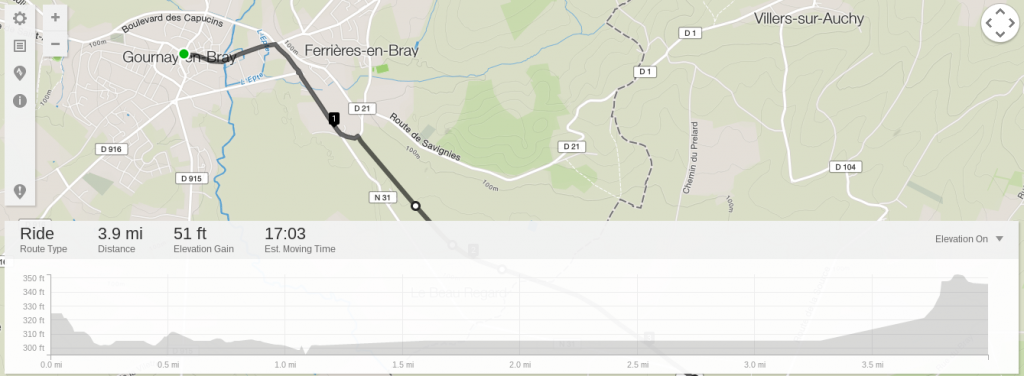
Next comes the decision on whether your riders will be supported or not. A van to transport bags and bikes (and tired riders) increases convenience but also cost. Add into the mix a qualified bike mechanic and their tools, first aid kits, food and drink and so on, and this continues to increase.
If you decide to get a support vehicle and driver, ensure that both are allowed to be taken abroad. Some rental companies will charge extra for this, others simply won’t allow it. Also ensure they have means of navigating themselves – there’s nothing more dispiriting for riders than a lost support vehicle!
Deciding whether riders will lead themselves along the route or follow a dedicated leader is the next step. A leader who is familiar with the route can increase confidence among the riders and reduce the risk of getting lost, but then a lot of cyclists enjoy the thrill of navigating for themselves (as well as the excuse to play with their Garmins).
The routing software we mentioned above allows you to download GPX files which you can give to riders to upload to their devices; make sure these have suitably long battery lives, and advise riders to bring charging cables and adaptors so they can charge at stops en route (it’s worth checking that planned stops will allow you to use their electricity).
How we inject that little bit of magic into our cycling holidays…
Start and finish: we find that iconic sights make great places to finish, as there’s nothing quite like a photo with an instantly recognisable background to show off to friends and family after the ride.
Routes: we recce all of our routes in full to ensure that every road is ridable and safe, and that they’re as beautiful and inspiring as possible. There’s nothing worse for riders than following a route that Google Maps has decided is the “best” which actually just follows the most direct dual carriageway between points, rather than exploring the beautiful scenery nearby.
Stops: there are huge psychological benefits to having done more than half of a day’s mileage before lunch, so we try to put lunch stops just after half way. We set up big, bold flags outside the cafés so they’re immediately noticeable, and also get in touch with them in advance to check there are plugs we can use for charging batteries.
Support: all of our tours feature support vehicles with the Ride25 livery and a fully qualified bike mechanic who checks bikes each day and can repair any issues. We have spare seats in support vehicles for any cyclists who need a rest, and we offer snacks and drinks at the roadside regularly on the route.
Navigation: we give each rider fully up to date GPX files for their devices and let them enjoy the adventure of leading themselves. This offers a great opportunity for team-building, and of course the support vehicles are on standby should anyone get lost (which rarely happens!).
Cycling holidays and Bike tours encompass everything from “a bike, a tent, a gas cooker and a sense of adventure” through to “3 course meals and 5 star hotels every night” depending on your budget and predisposition.
Once you’ve got the logistics sorted, figuring out which non-essential extras you want to offer is the next thing to think about. This could be anything from personalised luggage labels, to a complimentary beer at the end of the day, to a full body massage.
Again, the main consideration here is cost: the more frequent and luxurious your extras, the higher the cost of the ride will be.
We discuss expectations and budgets with our clients and decide on which extras would be most suitable. As an example, here are some of the things we can arrange:
According to Rob the most important aspects for a successful ride are “fitness, good shorts, and good equipment”.
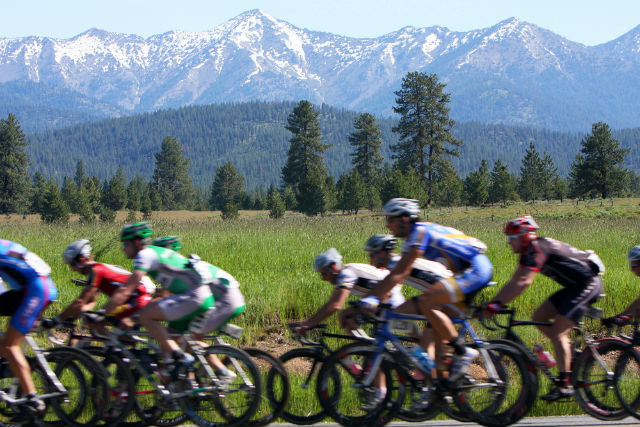
Once your planning is in motion you can begin advising cyclists on a suitable training regime.
Obviously the goal of training is to ensure riders are comfortable riding the distances and elevations that the route will require. Establishing their current level of ability is a good first step, although people are prone to under- or over-estimate this! We advise organising at least 1 compulsory training ride ahead of the ride so that people can get used to riding together, and you can gauge their general ability.
Bear in mind that people may drop out after signing up for the ride, and that the likelihood of this increases if they feel they aren’t able to keep up with the training regime. There is a delicate balance between showing cyclists what to expect on the ride, and putting them off by pushing them too hard!
We’ve put together a four part training guide which you can find here (part 1, part 2, part 3, part 4), as well as an article on how to train for a 100 mile ride – these are a good place to begin.
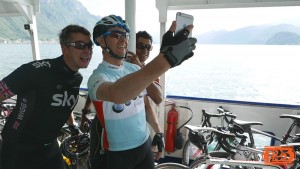
Whether riders are smiling with relief or grimacing with effort on the outside, you want them to be enjoying themselves on the inside.
Rob says that “as a rule, if around 90% of riders manage to finish the ride, that’s indicative of the correct level of challenge”, and highlights the importance of encouraging slower riders, “and reminding them that it’s not embarrassing to get in the support vehicle if they’re struggling”.
The main things affecting morale are weather and hunger: cycling through rain, into wind, or on an empty stomach will test even the most dedicated cyclist. With the latter point it’s important to ensure that all riders are well fed at stops and have snacks available to eat en route. If anyone begins to feel hungry this is a bad sign – they may be on their way to bonking! (Read our separate post on preventing this phenomenon here).
Obviously the weather is beyond your control, but you can advise cyclists to bring relevant gear. We recommend adding waterproof top and trousers to your kit list for the grimmest days, as well as suitably warm layers for any high altitude riding (sometimes temperatures can drop from 30+ to freezing during a mountain climb!). Offering riders the chance to store extra clothes in the van rather than carrying it with them is a nice touch.
We appreciate the value of a crisp refreshing pint of beer (or soft drink, of course!) at the finish line and recommend having this option available so riders can begin to unwind as soon as they’re off the saddle.
Little gestures like taking riders’ bags to their bedrooms have big benefits.
Depending on the group dynamic, we may arrange informal awards each evening. These are just a bit of fun and can be awarded for anything from “Strongest Rider”, to “Most Improved”, to “Looks Best in Lycra”. We find this encourages banter between riders and gets people smiling and laughing at the end of a day’s ride.
As you can see above there’s a lot to take into account – rides can take anywhere from 2 to 9+ months to organise with increased customisation taking longer – so let us reiterate our invitation for you to get in touch, and we can help you organise the perfect ride! Or visit our Corporate Cycling Events page to see more videos and info on what we do.


December 7th, 2015 at 8:47 pm
Great article. Sums up all the key elements so well. I have done all extremes from solo multi-day rides to fully supported events. The latter are truly great. A chance to live In a bubble and get as close as you can to the Grand Tour experience of the pros.